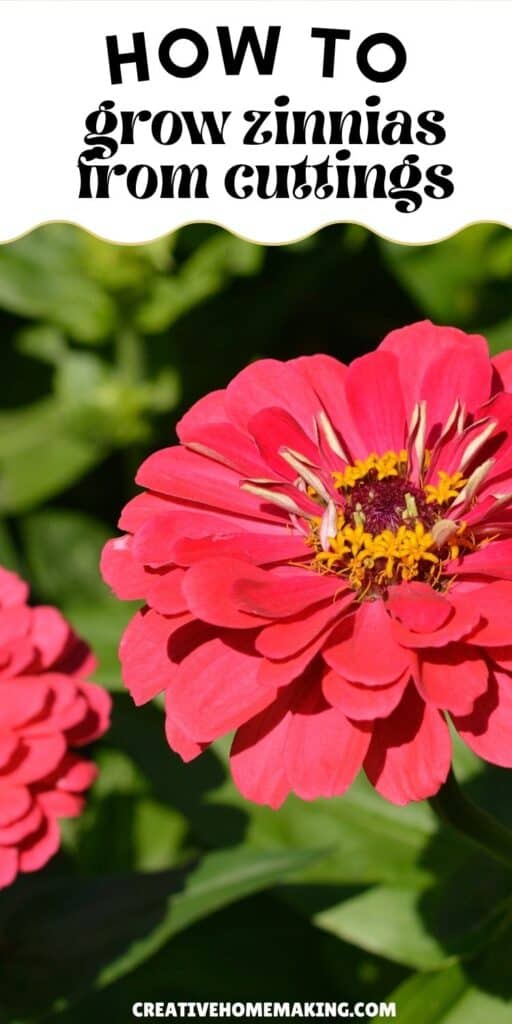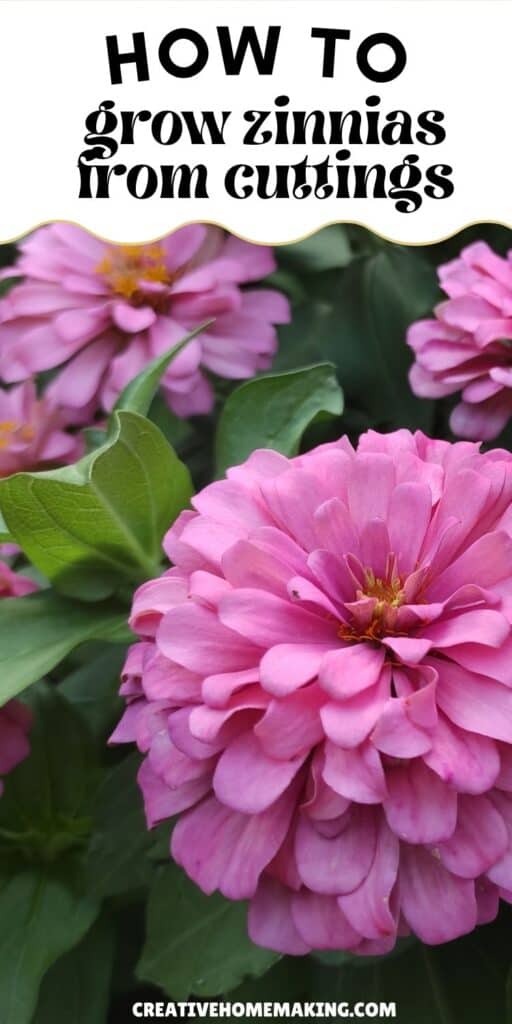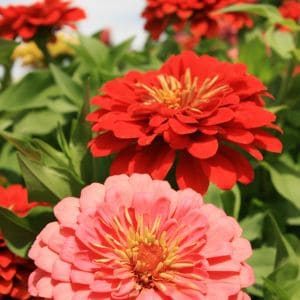If you want to grow more zinnias without starting from seeds, taking cuttings is a simple and effective way to do it. You can grow new zinnia plants by snipping a healthy stem, placing it in water to root, and then planting it in soil once roots appear. This method lets you quickly multiply your existing plants and enjoy their bright, colorful blooms throughout the season.
This post may contain affiliate links.
Growing zinnias from cuttings doesn’t need special tools or a lot of experience. With just a little care—keeping the cuttings moist and giving them enough sunlight—you can watch your new plants take root and grow strong. It’s a fun way to expand your garden and keep those cheerful flowers blooming all summer long.
Related Article: When to Pinch Zinnias: A Quick Guide

Essential Steps for Growing Zinnias from Cuttings
To grow new zinnias from cuttings, you need to pick the right stems, prepare them carefully, and use the best soil and conditions to help roots grow quickly. Paying attention to these details makes a big difference in how well your cuttings take.
Selecting Healthy Zinnia Stems
Choose stems that are green, flexible, and free of flowers or buds. Avoid woody or old stems because they don’t root as well. Look for new growth or side shoots coming from a healthy parent plant.
Make sure the stem has no visible pests or diseases. A stem about 4 to 6 inches long is ideal. Cut just below a leaf node, where roots are likely to form. Younger stems root faster and stronger compared to thick main stems.
Related Article: How to Save Seeds from Zinnias: A Beginner’s Guide
Preparing Cuttings for Rooting
Use clean, sharp scissors or garden shears to take your cutting. Remove all the lower leaves on the cutting, especially those that would sit below the soil line. This prevents rotting.
For better root growth, dip the cut end into rooting hormone before planting. This step is optional but helpful. Then, place the cutting in water or moist soil right away.

Optimal Rooting Medium and Conditions
Use a light, well-draining mix like seed starting soil or potting mix. Avoid heavy soil that holds too much water and can cause rot.
Plant the stem so the root area is just below the soil surface. Keep the soil moist but not waterlogged.
Choose a spot with indirect sunlight or partial shade. Sudden strong sun can stress the cutting. You can start in containers indoors to control light and temperature before moving outdoors.
Keep temperatures warm, around 70°F (21°C), for best root development.
Related Article: How to Deadhead Zinnias: A Friendly Guide
Caring for Rooted Zinnia Cuttings
Once your zinnia cuttings have grown roots, they need the right care to thrive. You’ll need to move them to soil carefully, provide enough water and sunlight, and watch out for pests or diseases that could harm them.
Transplanting Rooted Cuttings
When your cuttings have roots about 1-2 inches long, they are ready to move to soil. Choose a pot or spot in your garden with well-draining soil.
Gently take the cutting from water or the propagation medium. Avoid damaging the roots. Plant it about 1-2 inches deep.
Keep the soil moist but not soaked for the first two weeks. This helps the roots settle in and grow stronger. Avoid direct harsh sunlight right after transplanting; morning sun or afternoon shade works best.
Watering and Sunlight Needs
Zinnias like consistent moisture but dislike soggy soil. Check soil regularly and water when the top inch feels dry. Overwatering can cause root rot.
Place your plants where they get at least 6 hours of sunlight daily. Bright, direct light helps them grow strong and produce vibrant flowers.
If the cuttings are indoors, put them near a sunny window or use grow lights. Good air circulation also helps reduce disease risks.
Managing Pests and Diseases
Zinnias can attract aphids, spider mites, and whiteflies. Inspect your plants often, especially under leaves. You can spray them with water or use insecticidal soap to control pests.
Watch for signs of fungal diseases like powdery mildew. Removing affected leaves quickly and avoiding overhead watering helps prevent problems.
Keep your plants spaced well to improve airflow and lower disease chances. Healthy plants resist pests and illness better.
Follow my zinnia garden board on Pinterest.




